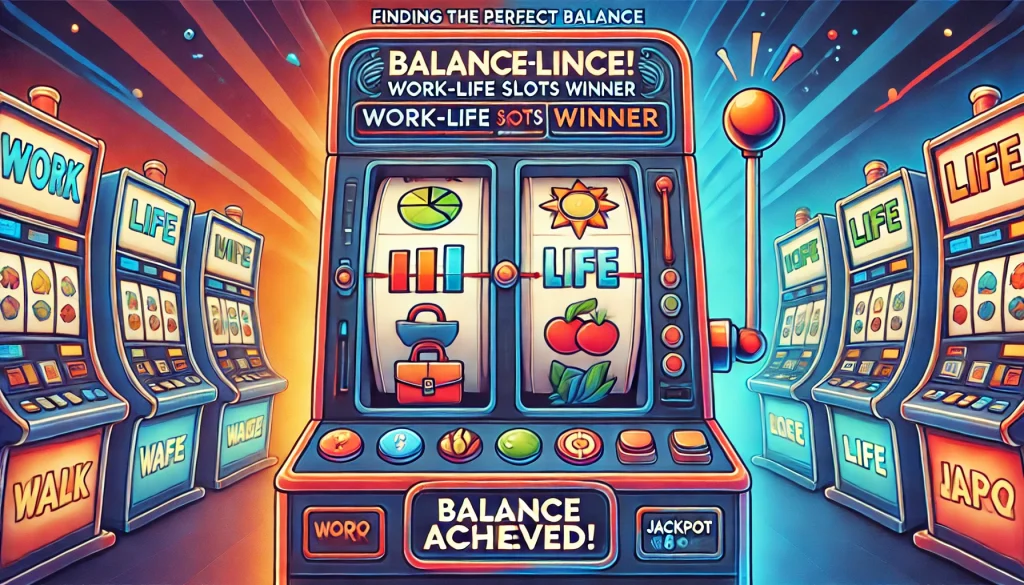
Finding Work-Life Balance: A Complete Guide The idea of work-life balance has become increasingly popular in recent years, especially as the boundaries between personal and professional life have become more hazy. The fundamental definition of work-life balance is striking a balance between the responsibilities of one’s job and one’s personal life. In order to preserve mental health, cultivate relationships, and improve general well-being, this balance is essential. Seeking work-life balance entails prioritizing activities that lead to a fulfilling life while skillfully handling professional obligations. It goes beyond simply allocating time equally between work & leisure.
It is impossible to overestimate the significance of work-life balance. Finding a healthy balance has been linked to reduced stress, greater job satisfaction, and increased productivity, according to research. For example, a study by the American Psychological Association discovered that workers who believe they have a healthy work-life balance are less likely to burn out and are more engaged at work. This balance is especially important in the fast-paced world of today, when technology makes it difficult to unplug from work-related activities.
To achieve work-life balance, one must first comprehend its subtleties. Considering What Really Matters. A key component of attaining work-life balance is setting priorities. It calls on people to consider what is most important to them in their personal and professional lives.
In order to guide decision-making, this process frequently entails compiling a list of values and objectives. Setting values and objectives first. For instance, a person might place a higher priority on personal growth, career advancement, family time, or health. One can make well-informed decisions about the efficient use of time and energy by defining these priorities. Also, setting priorities is a continuous process that might change over time rather than a one-time event. Self-evaluation and change adaptation.
Priorities can be drastically altered by life transitions like starting a family, changing careers, or taking up new hobbies. Regular self-evaluation is therefore crucial. Strategies like journaling or the use of digital tools can be used to monitor shifts in priorities and make sure that daily tasks are in line with long-term objectives. People can make deliberate decisions that promote their general well-being by regularly assessing what is most important.
Keeping a healthy work-life balance requires efficient time management. It entails scheduling & arranging work to optimize output while preserving personal time. The Pomodoro Technique is a well-liked strategy that encourages people to work in concentrated 25-minute bursts interspersed with brief breaks.
In addition to improving focus, this strategy avoids burnout by guaranteeing consistent rest periods. The Eisenhower Matrix is an additional useful tool that assists people in classifying tasks according to their importance and urgency. People can better prioritize their workload by differentiating between tasks that require immediate attention and those that can wait.
For example, a project deadline might be significant and urgent, but regular emails might be significant but not urgent. Focusing on high-priority tasks first helps people better manage their time and make time for personal pursuits. Maintaining a positive work-life balance requires setting boundaries. By establishing clear boundaries between work and personal obligations, people can better manage their time and energy. Setting clear work schedules & informing coworkers and superiors of them can help achieve this.
An employee may choose, for instance, to avoid answering business calls during family dinners or to avoid checking emails after 6 PM. Emotional boundaries are just as significant as temporal ones. Saying no to extra obligations that could interfere with personal time or cause stress is part of this. An employee should feel free to turn down new assignments that might throw them off balance, for example, if they are already overburdened with projects.
People can establish a more organized atmosphere that promotes both productivity & personal fulfillment by establishing clear boundaries. In today’s dynamic workplace, flexibility is essential to attaining work-life balance. More flexible arrangements that let people customize their schedules to suit their needs are gradually replacing the conventional 9–5 work model. Compressed workweeks, flexible scheduling, and remote work options are just a few ways that companies are embracing the varied lifestyles of their workforce. Adopting flexibility also entails being willing to modify plans when needed. Life is erratic; unforeseen circumstances may occur that call for quick action or cause priorities to change.
An unexpected family obligation, for example, might force a meeting to be rescheduled or a day of working from home. People who adopt an attitude that values flexibility are better able to overcome obstacles and uphold their commitment to their personal and professional lives. Maintaining work-life balance and general wellbeing requires self-care routines.
People can rejuvenate their bodies, minds, and emotions by regularly practicing self-care. This can involve engaging in hobbies, meditation, physical activity, or just taking some time to decompress. Including physical activity in one’s daily routine, for instance, releases endorphins that improve mood and lower stress levels in addition to promoting physical health. Also, self-care includes mental health practices in addition to physical ones. In the face of life’s and work’s demands, mindfulness practices like guided meditation or deep breathing exercises can help people stay focused and manage stress.
Making self-care a priority shows others in the workplace how important it is to take care of oneself and sends a strong message about this. Achieving work-life balance requires asking for help from others. When needed, having a support system—whether it be through friends, family, or professional networks—can offer motivation and useful help. One way to lessen the strain of juggling work & home life is to share responsibilities with a spouse or ask family members for assistance.
A more encouraging atmosphere at work can also result from encouraging open communication with coworkers and superiors. Talking about difficulties with the workload or getting stress management tips can foster a collaborative rather than competitive culture. These days, a lot of companies have employee assistance programs (EAPs) that offer counseling and mental health support resources. By using these resources, people can be empowered to deal with problems in a proactive manner and be reminded of how important it is to ask for assistance when necessary.
In order to achieve work-life balance, a continuous process of assessment & modification is necessary. It is crucial to regularly evaluate one’s current situation and make the required adjustments because life circumstances, priorities, & new challenges change over time. This could entail reevaluating time management techniques, reviewing goals, or redefining boundaries in light of new obligations.
Checking in with oneself on a regular basis, maybe weekly or monthly, to consider what is going well and what needs improvement, is a useful evaluation technique. Writing in a journal about work-life balance-related experiences can yield insightful information about behavioral trends and potential development areas. Also, getting input from dependable friends or coworkers can provide outside viewpoints that might point out blind spots or areas for improvement. People can develop a long-lasting strategy for work-life balance that changes as their personal and professional lives do by adopting this iterative process of assessment & modification.
This adaptability fosters a healthier approach to responsibility management, which benefits both individual well-being and workplace culture. In conclusion, achieving work-life balance is a multifaceted endeavor that requires intentionality and ongoing effort. One can design a satisfying life that balances career goals with personal well-being by comprehending the idea of balance, establishing priorities, putting time management techniques into practice, establishing boundaries, accepting flexibility, engaging in self-care, getting help, and routinely reviewing progress.




